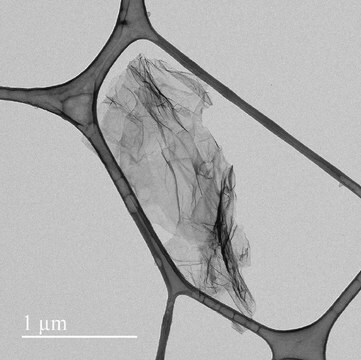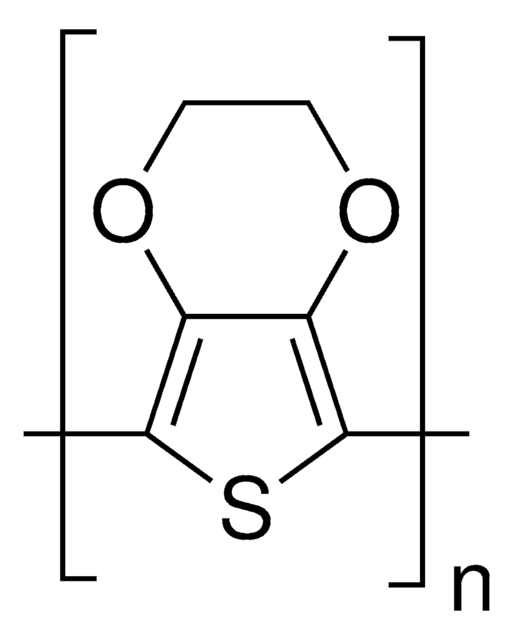900442
Graphene/PEDOT:PSS hybrid ink
dispersion in DMF, avg. no. of layers, 1 ‑ 3
Synonym(s):
Conductive ink, Electrochemically exfoliated graphene ink, G/PEDOT:PSS, Graphene ink
About This Item
Recommended Products
Quality Level
form
dispersion (in DMF)
feature
avg. no. of layers 1 ‑ 3
concentration
0.2 mg/mL (PEDOT:PSS)
1 mg/mL (electrochemically exfoliated graphene)
sheet resistance
500 Ω/sq, 20 nm film: 80% transmittance
General description
- Graphene preparation method: Electrochemical exfoliation.
- Graphene thickness by AFM: 80%, 1-3 layers.
- Sheet size by AFM: 10 μm.
- Oxygen content: 7.5% (by XPS) (C/O-ratio: 12.3).
- Raman I_D/I_G ratio: 0.4.
- Sheet resistance: 4.8 kΩ/sq.
- Typical properties of films produced thereof (after spray coating):
b) 20 nm film: 80% transmittance, 500 Ω/sq (as made).
Signal Word
Danger
Hazard Statements
Precautionary Statements
Hazard Classifications
Acute Tox. 4 Dermal - Acute Tox. 4 Inhalation - Eye Irrit. 2 - Flam. Liq. 3 - Repr. 1B
Storage Class Code
3 - Flammable liquids
WGK
WGK 2
Flash Point(F)
136.4 °F
Flash Point(C)
58 °C
Choose from one of the most recent versions:
Already Own This Product?
Find documentation for the products that you have recently purchased in the Document Library.
Customers Also Viewed
Articles
The European Green Deal and Circular Economy Action Plan address resource challenges with eco-products and circulatory work, while the revised EU Ecodesign Directive promotes e-waste reduction and natural resource value reform. This review examines renewable substrates and conductive materials for flexible electronics.
Professor Rivnay (Northwestern University, USA) discusses using organic mixed conductors as an alternative to efficiently bridge the ionic world of biology with contemporary microelectronics.
Dr. Tan and researcher introduce recent trends in Self-healing Soft Electronic Materials and Devices. The emergence of smart, functional SHPs will be highly beneficial to the advancement of the next-generation self-healing soft electronic devices. Autonomously self-healing devices could help to minimize the need for repair or replacement of electronics and machines, potentially reducing the cost of materials and reducing electronic waste.
Advances in scalable synthesis and processing of two-dimensional materials
Global Trade Item Number
| SKU | GTIN |
|---|---|
| 900442-50ML | 4061833245125 |
Our team of scientists has experience in all areas of research including Life Science, Material Science, Chemical Synthesis, Chromatography, Analytical and many others.
Contact Technical Service








